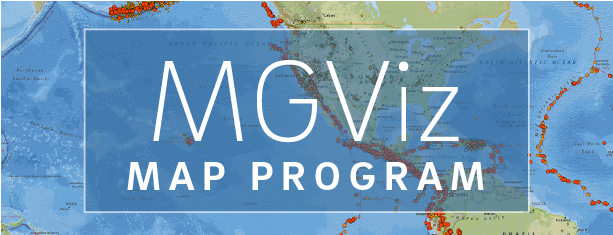About GAMIT
GAMIT and GLOBK are a comprehensive suite of programs developed by MIT for analyzing GPS measurements primarily to study crustal deformation, generating orbit/EOP products, and establishing and maintaining the reference frame.
The SOPAC data archive GAMIT directory contains all of the setup files listed here.
Station lists (analyzed by SOPAC)
Reference Frame Definition and Date Specific a priori Coordinates
The International Terrestrial Reference Frame (ITRF) is defined by IERS and is updated every few years. The most recent reference frame is ITRF2020. The previous two frames were ITRF2014 and ITRF2008.
Based on ITRF2020, the International GNSS Service (IGS) created a frame specific for GNSS technology, known as IGB20.
The derivation of ITRF is based on multiple modern space geodetic techniques, namely GNSS, SLR, VLBI, and DORIS.
Based on ITRF2020, the International GNSS Service (IGS) created a frame specific for GNSS technology, known as IGb20.
The current SOPAC data analysis, since 1992-06-13 (GPS week 648), is based on the IGb20 reference frame. IGb20 is derived from the analysis of GNSS only solutions contributed by IGS Data Analysis Centers while the core stations are constrained onto ITRF2020 defined stations. Therefore, its positions/velocities are completely consistent with IGS published orbits/clocks and earth orientation parameters (EOP), as well as all the physical models and model corrections, such as the antenna phase center model for receivers and satellites, the differential code biases (DCB), and various tidal loading displacements etc. SOPAC routinely processes a large volume of GPS data (about 3500 sites) collected from both global and regional networks, with a focus on tectonic plate boundaries.
The a priori coordinates used in SOPAC data processing come from three sources:
- IGb20 definition (major offsets caused by large earthquakes are considered);
- SOPAC multi-year solutions (if velocities are estimated);
- Most recent SOPAC weekly solutions (if velocities have not been estimated or affected by earthquakes).
The true of date a priori files containing the above mentioned a priori coordinates are date sensitive. Daily files are updated weekly. An example of an a prior file for YYYY=2025 and DOY=003
Station info
Receiver and Antenna tables
http://garner.ucsd.edu/pub/
rcvant.dat html
antmod.dat html
igs_08.atx (absolute antenna phase centers) html
Differential Code Biases
dcb.dat.code.rinex.G html
dcb.dat.code.rinex.R html
dcb.dat.code.rinex html
Station coordinate constraints file (sittbl)
sittbl.refined html
Session table (sestbl)
The session table contains configuration parameters for the GAMIT run. SOPAC splits its displacement time series into regional and global stations.
sestbl.regional html
sestbl.global html
Earth Rotation Parameters (EOPs)
Multi-year EOP files: pmu.bull_f html; pmu.bull_a html
UT1 (ut1.usno) html
POLE (pole.usno) html
Solar Ephemeris, Lunar Ephemeris, Nutation
The GAMIT tables below (soltab, luntab, nutabl) are no longer used: use instead JPL Small-Body Database
JPL nbody tables (binary file)
SOLAR (historical - do not use)
2020 2019 2018 2017 2016 2015 2014 2013 2012 2011 2010 2009 2008 2007 2006 2005 2004 2003 2002 2001 2000 1999 1998 1997 1996 1995 1994 1993 1992 1991 1990 1989 1988 1987 1986 1985
LUNAR (historical - do not use)
2020
2019 2018 2017 2016 2015 2014 2013 2012 2011 2010 2009 2008 2007 2006 2005 2004 2003 2002 2001 2000 1999 1998 1997 1996 1995 1994 1993 1992 1991 1990 1989 1988 1987 1986 1985
Nutation Tables (historical - do not use)
2020 2019 2018 2017 2016 2015 2014 2013 2012 2011 2010 2009 2008 2007 2006 2005 2004 2003 2002 2001 2000 1999 1998 1997 1996 1995 1994 1993 1992 1991 1990 1989 1988 1987 1986
Leap Second File
leap.sec html



